
views
- Take off the cabinet doors to access the hinges. Use a screwdriver or power drill to remove the hinge screws and hinges from each door.
- Put the hinges in a pot, cover them with water, and add dish soap. Simmer the mixture on the stove for 10 minutes to loosen dirt and grime.
- Scrub the hinges with a toothbrush and rinse them with warm water. Dry the hinges with a towel and lay them flat to air-dry completely.
Removing the Hinges
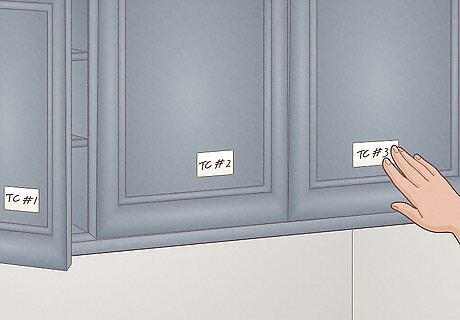
Label the cabinet doors. You're going to want to put each door back in the same spot, so plan ahead to avoid confusion. Stick a strip of painter's tape or something similar over each one. Label or number each door so you know which one goes where. For example: Write where each one goes, like “Left Door Under Sink” or “Right Door Over Range Hood.” Number top and bottom cabinets from left to right, like “Top Cabinet #1,” “TC #2,” and so on.
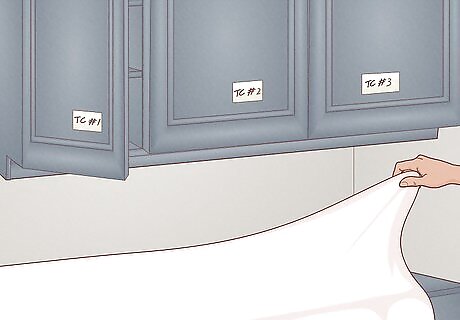
Protect surrounding surfaces. Lay a drop cloth over your counters and/or floors. Make clean-up easier by catching any sawdust or other debris that falls when you remove the hinges. Also, protect them against damage if a door slips from your grasp as you remove them.
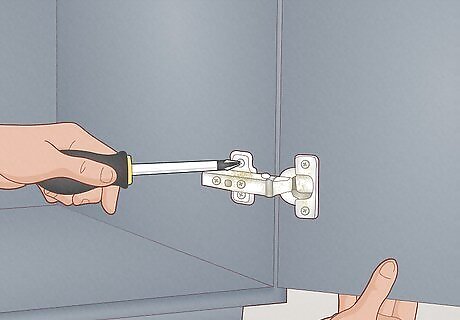
Remove the doors. Expect most cabinet hinges to be attached to the inside of the door. This means you will have to unscrew it with the door opened, so ask a partner to help you so they can hold it steady. Use a screwdriver or power drill to remove the hinge's screws from each door. However: More modern hinges may have a release latch that separates the hinge into 2 parts. This means that once released, you can remove the door from the cabinet and then unscrew its hinge attachment.
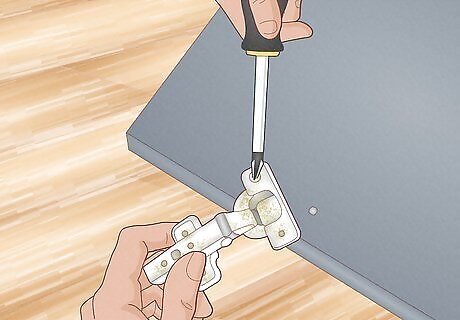
Unscrew the hinges. Use your screwdriver or power drill to remove the hinge from the cabinets. Do the same with the doors if your hinges have release latches and break down into 2 pieces. As you remove each one: Take note if all of your hinges are all the same. If not, group each type separately as you remove them and add notes to your doors' labels about which door had which type.
Soaking and Scrubbing the Hinges
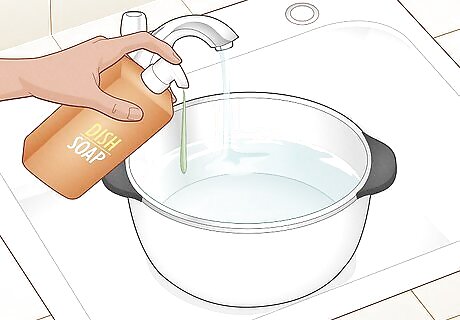
Prepare a soapy bath. Choose a pot or pan large enough to fit your hinges, and that you don't mind sacrificing if your hinges are particularly old and nasty. Add enough water to cover them. Also add 1 tablespoon (15 ml) of dish soap as it fills. Alternatively, you could use a slow cooker if you have other things to do, but again, the inside might get a little foul if your hinges are coated in grime. For especially dirty hinges, also add 1 tablespoon (15 ml) of white distilled vinegar and 1 tablespoon (12 g) of baking soda to the mix. Don't let hinges soak in vinegar for too long or else they could start corroding.

Bring the water to a boil and then lower heat to a simmer. Place the pot or pan on the stovetop. Turn the burner to high. Once the water comes to a boil, turn the heat to low. Let the water simmer for at least 10 minutes. If using a slow-cooker, set it to “low” and leave for 6 hours. Sprinkle salt in the water if your hinges are tarnished.
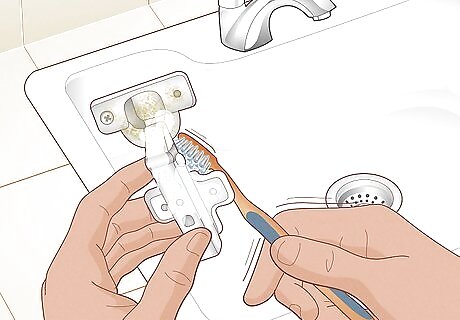
Scrub the hinges with a toothbrush. After the hinges have soaked long enough for the grime to loosen, drain the pot empty. Keep in mind that they'll be pretty hot to the touch, so either give them a chance to cool or wear safety gloves to take them out. Then brush each one vigorously with a fresh toothbrush to clean off the lingering residue. Use rubbing alcohol to help make the metal shine and to remove watermarks.

Rinse the hinges with warm water before drying them. As you clean each hinge, rinse off the grimy/soapy water with clean warm water. Inspect each in case it needs another soak and scrub. If so, repeat the process. Otherwise, towel each one dry as much as possible then set them out on a fresh towel or drying rack to air-dry before reinstalling.
Maintaining Hinges
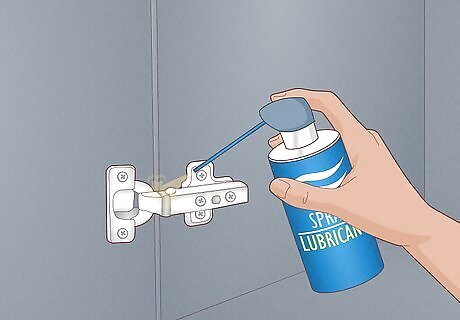
Fix squeaky hinges with lubricant. Apply spray lubricant to the top and bottom of the hinge. Then open and close the cabinet door a few times so the lubricant can work into the hinge while its parts are in motion. Repeat if the squeak doesn't disappear entirely after the first application.
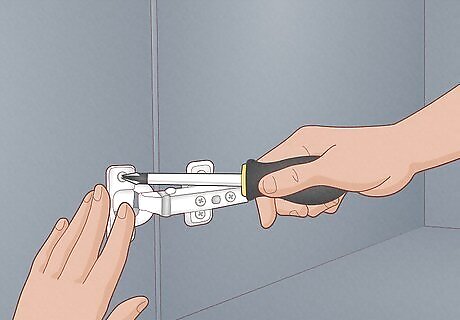
Tighten screws as needed. Keep in mind that repeatedly opening and closing cabinet doors will loosen the hinges' screws over time. Expect this to cause damage to your cabinets due to the door's weight pulling at the loose screws. Retighten the screws periodically to keep them firmly in place without gouging larger holes in the woodwork.
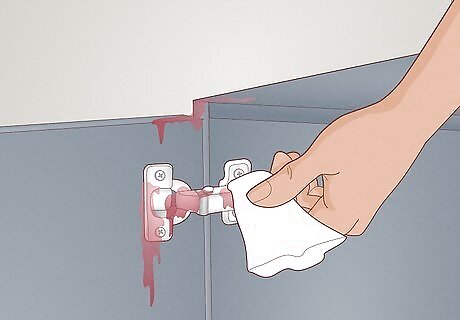
Spot-clean when needed. Prevent the need for frequent deep-cleaning by wiping up messes as soon as they occur. Wipe down the inside and outside components whenever they are dirtied by cooking, spills, or other means. Do the same as part of your routine kitchen-cleaning to prevent a buildup of gunk. How often you'll need to deep-clean your hinges will vary depending on how often you spot-clean them and how active your kitchen is. Use a solution that's 1 part vinegar and 1 part water. Spray the hinges with the solution and wipe them clean with a cloth. Alternatively, you can dip the end of a rag in soapy water and clean the hinges with it.
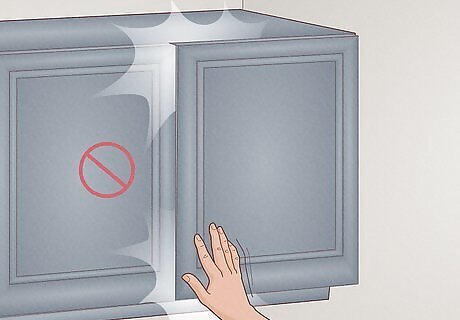
Avoid overstressing the hinges. Expect hinges to wear out and become less effective if you abuse them. Don't slam doors shut or whip them open since this places undue stress on the hinges. Avoid forcing doors to open wider than the hinges allow. Also avoid leaning, pulling, or otherwise placing undue weight on them.
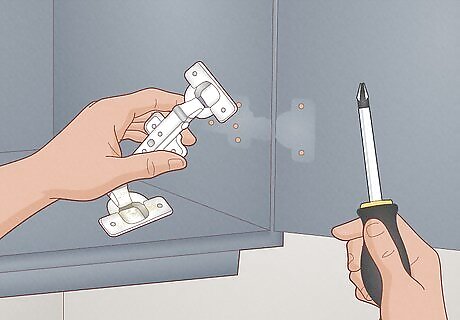
Replace the hinges when needed. With proper care and maintenance, hinges should last a pretty long time. However, if the doors don't function correctly despite deep-cleaning, consider replacing them. This may be necessary when: Doors do not open or close smoothly. Two doors interfere with each other when opening and closing. Hinges appear warped or otherwise damaged.

















Comments
0 comment